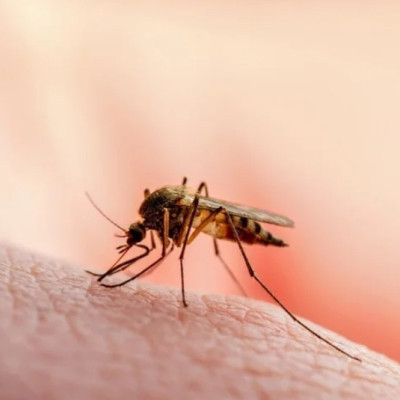
2023-04-17
Visited : 448
In a recent study published in the Proceedings of the National Academy of Sciences (PNAS) Nexus Journal, researchers examined the barrier effect of cellulose nanocrystals (CNCs) on mosquitoes.
Background
Mosquitoes are vectors of many parasitic/epidemic diseases, such as zika, malaria, yellow fever, and chikungunya. Malaria eradication is one of the top goals of the United Nations by 2030.
Various strategies are being evaluated to achieve this goal, including vaccines, treatment, solutions to prevent mosquito bites, and eradicating mosquito populations.
Topical repellents contain natural odorant compounds (e.g., citronella) or synthetic non-odorant compounds (N, N-diethyl-meta-toluamide).
They are generally active molecules acting on olfactory receptors rendering the skin an undesirable target for mosquitoes. Nonetheless, they have limited effective distance/time range.
CNCs are formed by the acid hydrolysis of amorphous cellulose and are readily water-soluble. They are transparent in water at low concentrations and can be cast and dried into thin films. CNCs also exhibit liquid crystal behavior at lower concentrations, making them suitable for stable dispersion.
The study and findings
In the present study, researchers examined the barrier properties of CNCs on Aedes aegypti mosquitoes. First, one author placed their hand for 10 minutes in a cage containing 15 female mosquitoes. A defined skin region was exposed with and without topical CNC application.
Since CNC did not ideally dry on the skin and cracked due to brittleness, glycerol was used in the aqueous solution. CNC-glycerol significantly reduced the number of blood-fed mosquitos.
It was difficult at this stage to determine if the barrier effect was physical or chemical. Video monitoring suggested that fewer mosquitoes landed on the hand coated with CNCs.
The authors performed another experiment to determine the chemical barrier properties of the CNC-glycerol mix. As such, the artificial feeding system (Hemotek) was used to eliminate human bias.
Membrane filters collecting eggs were captured with the same camera equipment and lighting conditions. The differences in the reduction in eggs were dramatic between the control (parafilm) and CNC, confirming the barrier effect of the CNCs.
Further, indole was added to the CNC-glycerol solution, as reports suggested its role in inhibiting host attraction in these mosquitoes.
The CNC-indole coating was the most effective in reducing the number of eggs on the membrane filter. Finally, a simple headspace experiment assessed whether the CNC films could block ammonium hydroxide, a mosquito attractant.
This confirmed that CNC blocked ammonium hydroxide vapors, suggesting a chemical barrier effect.
Conclusions
The researchers noted that CNCs could reduce blood feeding in A. aegypti mosquitoes when tested on a human hand and the artificial Hemotek membrane feeding system.
These experiments confirmed that CNCs served as a chemical camouflage, significantly reducing the number of eggs laid. This decrease in egg laying was further improved when indole was used in the CNC-glycerol preparation.
Moreover, CNC films blocked the permeation of ammonium hydroxide vapors, confirming the chemical barrier effect of CNC.
Overall, the ubiquity of cellulose, biocompatibility of CNCs, and self-assembly characteristics make CNCs ideal candidates for next-generation personal protective equipment.
Read the original article on News Medical.